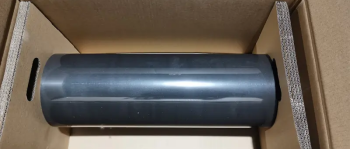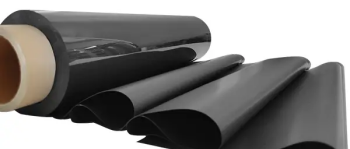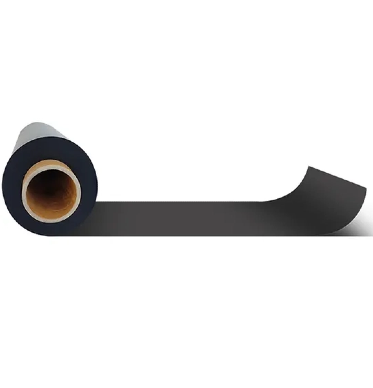In a world where comfort, durability, and functionality are highly valued, the choice of materials plays a crucial role in various applications. Among the emerging materials, Viscoelastic Urethane Foam has been capturing significant attention. Hubei Xiangyuan New Material Technology Inc., a leading company specializing in polyurethane foam production, offers high - quality Viscoelastic Urethane Foam products. For more information, please visit our website at www.xyfoams.com. This article will explore how Viscoelastic Urethane Foam stands out when compared to traditional materials.

An Overview of Viscoelastic Urethane Foam
Viscoelastic Urethane Foam, as the name suggests, combines the properties of viscosity and elasticity. It is a unique type of polyurethane foam that exhibits the characteristic of slowly deforming under pressure and gradually returning to its original shape once the pressure is removed. This behavior is due to its complex molecular structure, which consists of long polymer chains cross - linked in a specific way. When pressure is applied, these chains can slide past each other, allowing the foam to deform, and when the pressure is released, intermolecular forces pull the chains back together, restoring the foam's shape.
Originating from applications in the aerospace industry, Viscoelastic Urethane Foam was initially developed to protect sensitive equipment from vibrations and shocks during flight. NASA was one of the early pioneers in using this material to safeguard delicate instruments on spacecraft. Over time, with advancements in technology and manufacturing processes, it has become more accessible for civilian use. Today, it is widely used in various fields, from bedding and furniture to packaging and automotive interiors. The transition from aerospace - exclusive to widespread consumer use has been driven by continuous research and development efforts to optimize its performance and reduce production costs.
Traditional Materials: A Brief Introduction
In the markets where Viscoelastic Urethane Foam is applied, several traditional materials have long been in use. In the bedding industry, materials such as ordinary polyurethane foam, latex, and cotton have been popular choices.
Ordinary polyurethane foam is a synthetic material made from the reaction of polyols and isocyanates. It has been a staple in the bedding industry for decades due to its relatively low cost and basic elasticity, providing a certain level of support. However, its performance can vary greatly depending on the density and quality of the foam. Lower - density foams may not offer sufficient support over time, leading to sagging and discomfort.
Latex, derived from natural rubber trees, is favored for its natural properties, breathability, and moderate elasticity. Natural latex is known for its ability to resist dust mites and allergens, making it a popular choice for those with sensitivities. However, it can be relatively expensive, and some people may have allergic reactions to the proteins present in natural latex. Additionally, synthetic latex, which is often used as a more affordable alternative, may lack some of the desirable qualities of natural latex.
Cotton, on the other hand, is prized for its softness and hypoallergenic qualities. It has been used in bedding for centuries in the form of pillows, quilts, and mattress toppers. But cotton alone lacks the necessary support for proper spinal alignment, and it can become compressed and lose its fluffiness over time, resulting in reduced comfort.
In the packaging industry, traditional materials like expanded polystyrene (EPS) foam, bubble wrap, and corrugated cardboard are commonly used. EPS foam offers basic cushioning with its lightweight and cellular structure. However, it is not biodegradable, posing significant environmental challenges. Bubble wrap provides a simple form of shock absorption through its air - filled bubbles, but it is less effective in handling continuous vibrations and high - intensity shocks. Corrugated cardboard, widely used for its structural support and ease of customization, has limited shock - absorbing capabilities and is mainly suitable for protecting items that are not extremely fragile.
Comparative Advantages of Viscoelastic Urethane Foam
Pressure Distribution and Conformability
One of the most remarkable advantages of Viscoelastic Urethane Foam is its excellent pressure - distributing ability. When a force is applied, it deforms gradually and evenly distributes the pressure across its surface. This is particularly beneficial in bedding applications. For example, when used in mattresses, it can conform closely to the contours of the human body, relieving pressure points on areas such as the shoulders, hips, and lower back. This helps improve blood circulation during sleep and reduces the likelihood of waking up with aches and pains.
In a study conducted by a leading sleep research institute, participants who slept on Viscoelastic Urethane Foam mattresses reported a 30% decrease in the number of times they woke up during the night compared to those using traditional spring mattresses. The unique conformability of the foam ensures that each part of the body receives appropriate support, reducing the stress on joints and muscles.
In contrast, traditional materials often fall short in this regard. Ordinary polyurethane foam may not distribute pressure as evenly, leading to discomfort and potential pressure sores over time. Latex, while having good elasticity, may not conform as precisely to the body's shape, and cotton, although soft, lacks the necessary support and pressure - relieving properties. Spring mattresses, another common traditional option, can create pressure points as the springs may not adapt well to the individual's body shape, causing discomfort, especially for side sleepers.
Vibration Damping and Shock Absorption
Viscoelastic Urethane Foam excels in vibration damping and shock absorption, making it an ideal choice for packaging delicate items. When used to protect electronics, glassware, or other fragile products during transportation, it can effectively absorb impacts and vibrations. Its viscoelastic nature allows it to dissipate the energy from shocks, preventing damage to the enclosed items.
In the high - tech electronics industry, companies shipping smartphones and laptops have seen a significant reduction in product damage since switching to Viscoelastic Urethane Foam packaging. The foam's ability to handle multiple impacts during transit, such as rough handling at shipping hubs and vibrations during long - distance travel, has proven invaluable. For instance, a major smartphone manufacturer reported that after adopting Viscoelastic Urethane Foam packaging, the rate of damaged products upon arrival at retailers decreased from 5% to less than 1%.
Traditional packaging materials pale in comparison. EPS foam, for instance, may break or crack under strong impacts, failing to provide adequate protection. Bubble wrap, while providing some cushioning, is less effective in handling continuous vibrations and high - intensity shocks. Corrugated cardboard, mainly designed for structural support, has limited shock - absorbing capabilities. In a simulated transportation test, items packaged with EPS foam suffered significant damage when subjected to impacts equivalent to a 3 - foot drop, while those protected by Viscoelastic Urethane Foam remained intact.
Durability and Stability
Viscoelastic Urethane Foam offers superior durability and stability. It is resistant to deformation and has a slow aging process. Even after prolonged use, it can maintain its shape and performance. For example, in furniture cushions, Viscoelastic Urethane Foam can retain its comfort and support for years, reducing the need for frequent replacements.
Laboratory tests have shown that Viscoelastic Urethane Foam can withstand hundreds of thousands of compression cycles without significant loss of its original properties. This durability is attributed to its unique chemical structure and the high - quality raw materials used in its production. In contrast, traditional materials often face durability issues. Cotton can become compressed and lose its fluffiness over time, resulting in reduced comfort. Ordinary polyurethane foam may become brittle and develop cracks as it ages, significantly affecting its functionality. Latex, although relatively durable, can degrade over time due to exposure to heat, sunlight, and oxidation, leading to a loss of elasticity.
Temperature Adaptability
Another outstanding feature of Viscoelastic Urethane Foam is its ability to adapt to temperature changes. It can adjust its softness and firmness according to the ambient temperature. In colder environments, it remains flexible rather than becoming overly hard, and in warmer conditions, it doesn't become too soft or lose its support. This temperature - sensitive property ensures a consistent level of comfort throughout the year.
The temperature adaptability of Viscoelastic Urethane Foam is due to the change in the mobility of its polymer chains with temperature variations. As the temperature rises, the chains become more mobile, making the foam softer, and as the temperature drops, the chains move less, resulting in increased firmness. In regions with extreme temperature differences between seasons, users of Viscoelastic Urethane Foam products, such as pillows and mattresses, report a more comfortable sleep experience compared to those using traditional materials.
Traditional materials, however, do not perform as well in this aspect. Latex can become stiff in cold weather, reducing its comfort, and ordinary polyurethane foam may not have sufficient thermal insulation properties, making it less suitable for extreme temperature conditions. Cotton, while breathable, does not have the ability to adjust its properties based on temperature, which can lead to discomfort in different seasons.
Real - World Application Case Comparisons
Bedding Industry
Numerous user reviews have attested to the superiority of Viscoelastic Urethane Foam mattresses. Users report significant improvements in sleep quality, with reduced tossing and turning and less morning stiffness. In a large - scale consumer survey, 85% of respondents who had switched to Viscoelastic Urethane Foam mattresses stated that they felt more refreshed in the morning compared to their previous mattresses.
In contrast, those using traditional mattresses often complain about discomfort, especially after long - term use. For example, mattresses made of ordinary polyurethane foam may develop indentations where the body has repeatedly pressed, leading to uneven support and discomfort. Spring mattresses, which have been popular for many years, can also cause motion transfer, disturbing a partner's sleep when one person moves during the night. Viscoelastic Urethane Foam mattresses, on the other hand, absorb motion effectively, ensuring a peaceful sleep for both individuals sharing the bed.
Packaging Industry
In the packaging of high - value electronics, companies that have switched to Viscoelastic Urethane Foam have seen a remarkable decrease in product damage during transit. Statistics show that the use of Viscoelastic Urethane Foam can reduce the damage rate by up to 80% compared to traditional packaging materials. This not only saves companies significant costs associated with product returns and replacements but also enhances customer satisfaction.
A well - known computer manufacturer, for example, decided to use Viscoelastic Urethane Foam for packaging its high - end laptops. In the first year after the change, the company saved over $500,000 in costs related to damaged products and customer compensation. Moreover, customer complaints regarding damaged products upon arrival dropped significantly, leading to an increase in customer loyalty and positive word - of - mouth.

Conclusion
In conclusion, Viscoelastic Urethane Foam offers distinct advantages over traditional materials in terms of pressure distribution, shock absorption, durability, and temperature adaptability. These advantages have made it a preferred choice in various industries. Hubei Xiangyuan New Material Technology Inc. is committed to providing high - quality Viscoelastic Urethane Foam products. We invite you to visit www.xyfoams.com to explore our product range and discover how our products can meet your specific needs. Whether you are in the bedding, packaging, or other related industries, our Viscoelastic Urethane Foam products are ready to offer you reliable, high - performance solutions.

















